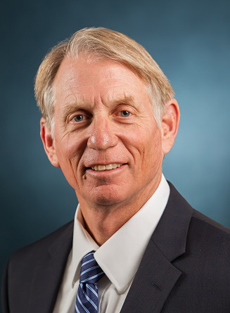
Dicks commentary bug

"If you always do what you have always done, you will always get what you have always gotten."
— author unknown
Why is it that everyone wants change, but nobody wants to change? In the U.S. veterinary profession, the list of wishes is long and ambitious: Lower student debt. Higher veterinary salaries. Better compliance by clients. More freedom by doctors to practice the type of medicine they deem appropriate. Less time spent on paperwork. The list goes on.
While all the goals are attainable, reaching them requires changing current processes. Sounds simple enough, yet the profession just keeps on keeping on, doing the same thing the same way, day after day.
The routine processes become patterns and the patterns interweave to become the veterinary profession paradigm. A paradigm, using the contemporary meaning from The Structure of Scientific Revolutions, a book about the history of science by the American physicist and philosopher Thomas Kuhn, is "universally recognized scientific achievements that, for a time, provide model problems and solutions for a community of practitioners.”
Put more simply, a paradigm begins as a proven solution to a problem. As we rely on it time and again, it becomes accepted and common. While these common practices may originally have been based on evidence and supported by shared beliefs, over time, changes — whether in technology, in consumer needs, and/or in the structures of markets — may cause these accepted practices to have adverse consequences.
Michael R. Dicks 288

Photo by Scott Nolan
Michael R. Dicks directed the American Veterinary Medical Association Veterinary Economics Division from 2013 to 2018.
Paradigms by their nature are hard to escape. As new evidence arises or our shared beliefs shift, small changes to accepted patterns might occur, but even these incremental changes often take years and considerable effort to achieve, and rarely do they affect the overall processes involved in providing, say, veterinary services.
Consider changes in recommended protocols for the frequency of vaccinations or the American Animal Hospital Association standard change in 2013 that anesthesia be used for complete dental examinations. The changes were a long time in evolving and they affect just one relatively small aspect of how veterinary care is taught and practiced. They don't affect the educational process or the overall process of delivering veterinary services.
Ruts in education, employment, private practice
The veterinary profession paradigm has three components:
- The processes that create new veterinarians (education, certification and licensing)
- The processes to transition new graduates into veterinary service providers (employment)
- The processes used to deliver veterinary services (generally, profit-making independent hospitals)
No major changes in these processes have occurred in at least 60 years. Students still go to veterinary college for four years to become veterinarians. They still spend two or three years gaining basic knowledge and one or two more gaining technical skills. After college, they are independent professionals seeking employment or further education. Once hired, they follow the dictates of the employer in how they provide veterinary services, before possibly going on to start or purchase their own practice, following the model they learned in school and as an employee.
Consider the shared beliefs on which the profession’s paradigm has been built: Four years of veterinary school is required to develop a new veterinarian. A 40-hour work week is standard. Associates should be paid 20% of their production. A practice is worth five times its annual earnings. These are just a few examples. What is the scientific evidence upon which these practices and beliefs are founded? If it exists, I have not found it.
The principal components of the veterinary profession paradigm each are embedded in a specific market. There's a market for veterinary education, a market for veterinarians and a market for veterinary services. These markets, like all markets for trades and professions, become perpetual-motion machines, ensuring that everyone keeps on keeping on.
Market structure, conduct and performance explained
Market structure is the number and relative size of buyers and sellers. Each has a structure that creates certain conduct that results in that market's performance. In the U.S. veterinary education market, there are thousands of would-be buyers (applicants) and 30 sellers in the United States, plus a dozen or so sellers outside of the country (all U.S.-accredited). The sellers set the prices. Within guidelines established by the American Veterinary Medical Association Council on Education, the sellers also set the rules, regulations, processes and practices that applicants must accept, without negotiation, in order to consume the service.
In the employment market at the moment, there are more buyers (employers) than sellers (veterinarians). In the market for veterinary services, there are many more buyers (pet owners) than sellers (veterinarians). Some communities have only one or two veterinarians.
The differences in market structures naturally lead to differences in how players behave in the respective markets. In the education and services markets, the sellers (schools and veterinary practices) control prices. Students who want to be veterinarians have little control in the education market. Likewise, animal owners in the veterinary services market have little control over what and how services are provided. Many choose to buy services sparingly or not at all, which means that their animals are going without needed veterinary care.
In the employment market, by contrast, neither buyer nor seller has consistent control of price (wages). In an expanding economy, sellers (veterinarians available for hire) have the upper hand. In a contracting economy, buyers (employers) exert more control. In this more balanced market, price serves as a powerful influence in the employment decisions of new veterinarians.
Consider the number of board-certified veterinary surgeons. It has more than doubled, to 2,200, since 2007. The total number of veterinarians has grown by only 30% during the same period. 2017 AVMA figures show median income of all boarded specialists is $135,000, compared with $85,000 among generalists. Pay makes a difference.
The behavior of players in a market, called market conduct, affects market performance, which is judged by how efficiently sellers use resources to meet the demands of buyers. Economic theory suggests that markets with many buyers and sellers offer the highest efficiency, and markets with few buyers or few sellers, the lowest. (For business owners, however, the financial benefits are greatest when there are few sellers, and least when there are many.)
When market performance is less than optimal, the structure may change marginally, or the profession's governing bodies may implement policies that change conduct. For example, when veterinary practices routinely charged high markups on pharmaceuticals, new sellers — online vendors, secondary distributors and big box retailers — entered the market. A small change of this sort is a normal adjustment within a paradigm.
Both veterinary colleges and veterinary practices have a certain amount of monopoly power — a monopoly in this context being one entity selling to many buyers — and enjoy a demand that exceeds the supply. Their position of control enables them to raise prices as a primary profit strategy.
The structure of these markets has produced a conduct (price increases in excess of inflation) that yields undesirable outcomes (high student debt and an increasing gap between health care that animals need and what owners will pay for). The persistence of these conducts and outcomes is evidence that the paradigm no longer works. One could argue that the current veterinary profession paradigm has inhibited the innovation necessary to meet the needs of society.
In 1949, a pair of psychologists, Jerome Bruner and Leo Postman, wrote a paper titled On the Perception of Incongruity: a Paradigm, that was published in the Journal of Personality. The paper concerns how people process disruptive information. Data that does not fit the commonly accepted assumptions of the discipline are either discounted or explained away as long as possible. Kuhn pointed out that the longer commonly accepted assumptions prevail in the face of mounting evidence to the contrary, the larger the crisis when it becomes clear that prevailing assumptions no longer are valid. The crisis leads to new insight, and the old paradigm shifts to a new one.
In the veterinary profession, a long list of crises that likely will provoke a paradigm shift include mounting ethical stress, rising financial stress of new veterinarians, declining numbers of animals receiving adequate care, veterinary practice consolidation, and declining percentages of veterinary members in professional organizations.
A new paradigm seems inevitable. The question is whether the profession leads the shift or is compelled to adjust to one imposed by outside forces.
Next: Cracks in the foundation of the veterinary services market
About the author: Michael Dicks, PhD, established the veterinary economics division of the American Veterinary Medical Association in 2013 and was its director until 2018. Dicks earned a BS in biochemistry and animal science from California Polytechnic State University, taught chemistry as a Peace Corps volunteer in Kenya, then completed a master's and doctorate in agricultural economics at the University of Missouri. He was employed by the U.S. Department of Agriculture Economic Research Service for five years before joining the faculty at Oklahoma State University, where he spent nearly 24 years prior to his stint at the AVMA.